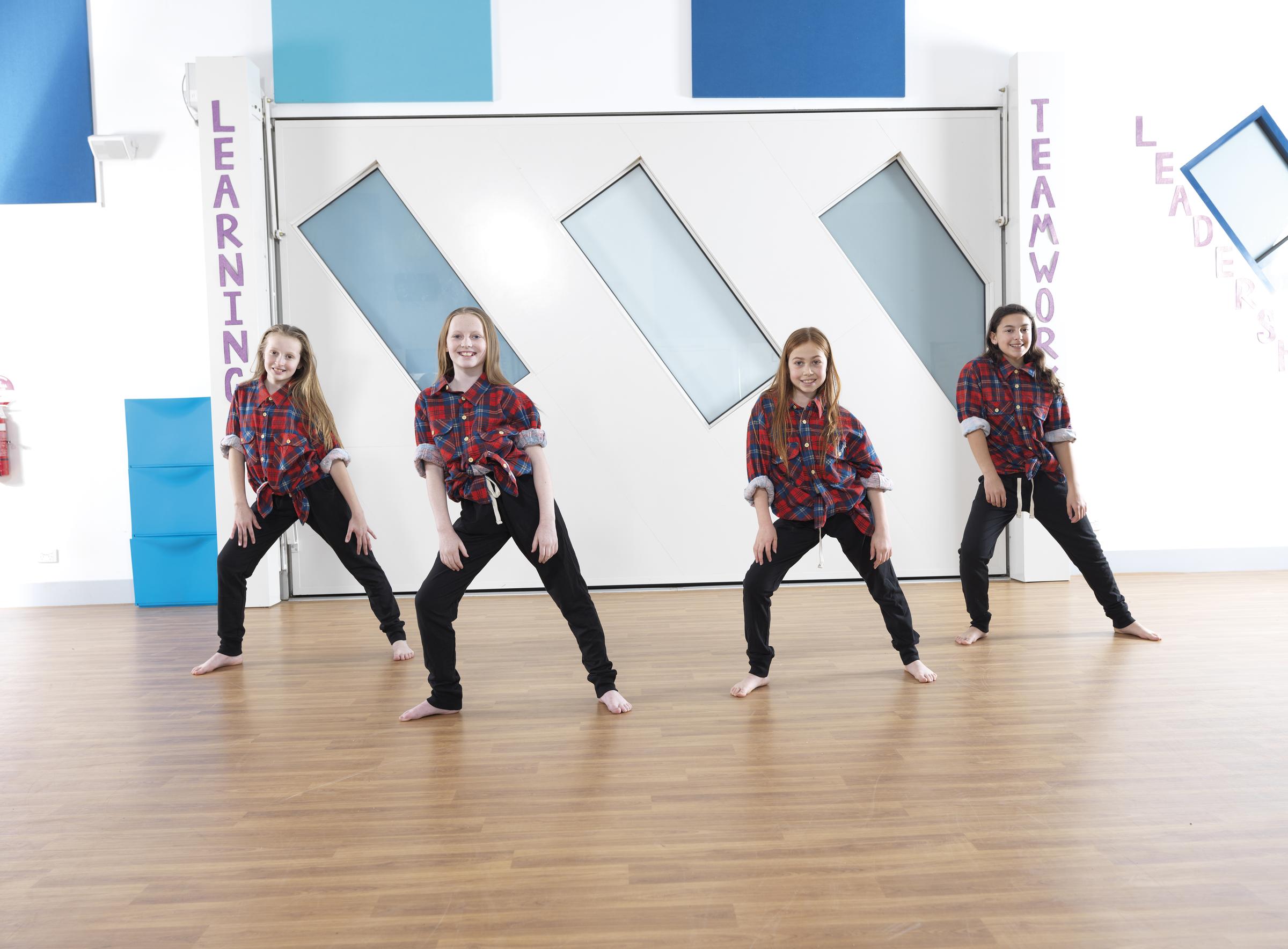Dance

DANCE
Unit 1
Students explore the potential of the body as an instrument of expression and communication in conjunction with the regular and systematic development of physical dance skills. Students discover the diversity of expressive movement and purposes for dancing in dances from different times, places, cultures, traditions and/or styles. They commence the process of developing a personal movement vocabulary and also begin the practices of documenting and analysing movement. Students learn about relevant physiology and approaches to health and wellbeing, and about care and maintenance of the body.
Outcome 1: describe and document features of other choreographers’ dance works.
Outcome 2: choreograph and perform a solo, duo and/or group dance work and complete structured improvisations.
Outcome 3: safely and expressively perform a learnt solo, duo or group dance work
Outcome 4: describe key approaches to wellbeing and health practices for dancers and essential aspects of physiology, and demonstrate the safe use and maintenance of the dancer’s body.
Unit 2
Students extend their personal movement vocabulary and skill in using a choreographic process by exploring elements of movement (time, space and energy), the manipulation of movement through choreographic devices and the types of form used by choreographers. Students are introduced to a range of dance traditions, styles and works. Students describe the movement vocabulary in their own and others’ dances by identifying the use of movement categories and ways the elements of movement have been manipulated through the use of choreographic devices. Students make links between the theoretical and practical aspects of dance across the areas of study through analysis and discussion of the way their own and other choreographers’ intentions are communicated, and through the ways movement has been manipulated and structured.
Outcome 1: analyse use of the movement categories and elements of movement in selected dance traditions, styles and/or works.
Outcome 2: Students choreograph a solo, duo or group dance work. Using the choreographic process and choreographic devices to safely manipulate movement, they explore their chosen intention and develop personal movement vocabulary. They complete structured solo, duo and/or group improvisations to develop their understanding of different ways that improvisation can be used as a starting point for choreography
Outcome 3: safely and securely perform a learnt solo, duo or group dance work with artistry, and report on the realisation of the dance work.
Unit 3
In this unit students choreograph, rehearse and perform a solo dance work that allows them to execute a diverse range of physical skills and actions drawn from all movement categories. Students continue regular and systematic dance training and learn and perform a duo or group dance work created by another choreographer. They continue to develop their ability to safely execute movement vocabulary and perform with artistry. Students analyse the realisation of their solo and the learnt duo or group dance work, focusing on the processes of choreographing or learning, rehearsing, preparing for performance and performing. Students further develop their understanding of the choreographic process through analysis of two dance works by choreographers of the twentieth and/or twenty-first centuries.
Outcome 1: analyse two selected dance works.
Outcome 2: choreograph, rehearse and perform a skills-based solo dance work and analyse the processes used to realise the solo dance work.
Outcome 3: learn, rehearse and prepare for performance, and perform a duo or group dance work by another choreographer and analyse the processes used.
Unit 4
Students choreograph, rehearse and perform a solo dance work with a cohesive structure. When rehearsing and performing this dance work students focus on communicating the intention with accurate execution of choreographic variations of spatial organisation. Students continue to develop their understanding of the choreographic process through analysis of a group dance work by a twentieth or twenty-first century choreographer. Students analyse the use of group structures (canon, contrast, unison, and asymmetrical and symmetrical groupings and relationships) and spatial organisation (direction, level, focus and dimension) and investigate the influences on choices made by choreographers in these works.
Outcome 1: analyse a selected group dance work.
Outcome 2: choreograph, rehearse, perform and analyse their realisation of a solo dance work.
